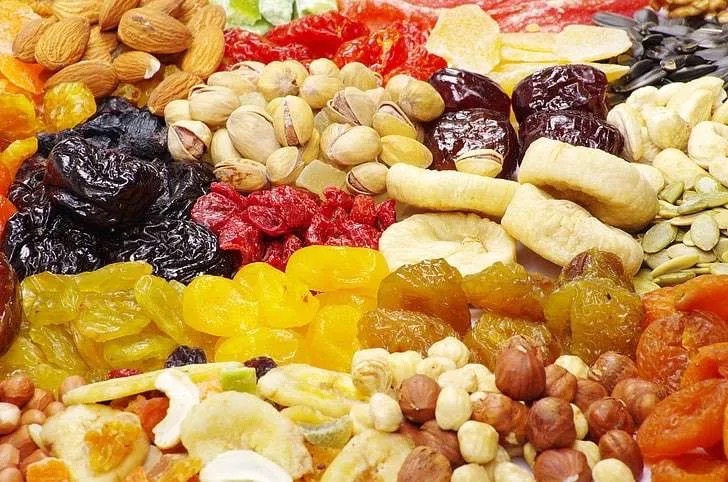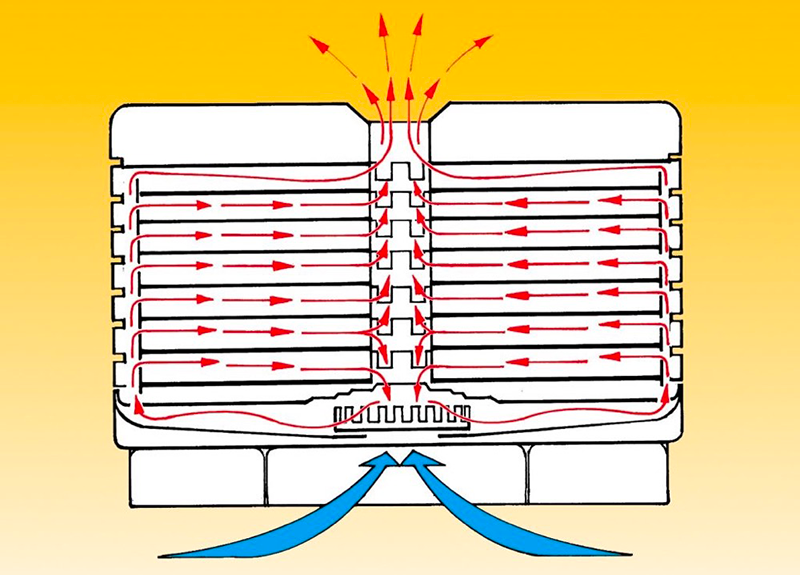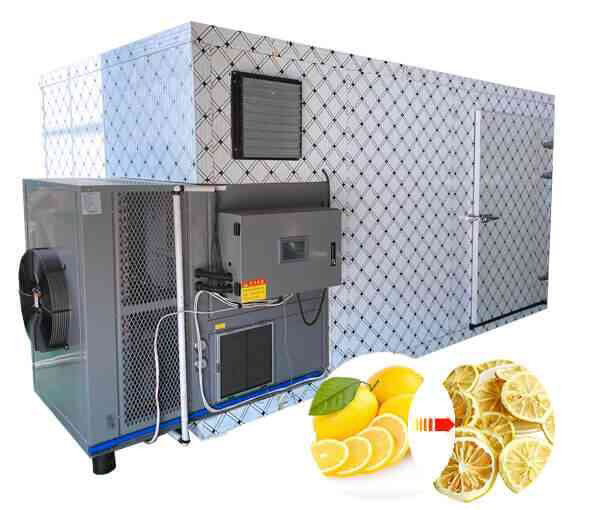
Content Menu
● Understanding Food Dehydrators
>> Types of Food Dehydrators
● Energy Consumption Overview
● Factors Affecting Energy Consumption
>> 1. Size and Capacity
>> 2. Power Rating
>> 3. Drying Time
>> 4. Thermostat Control
>> 5. Airflow System
● Cost Analysis of Running a Food Dehydrator
● Benefits of Using a Food Dehydrator
● Tips for Reducing Energy Consumption
● Comparing Food Dehydrators with Other Preservation Methods
● Conclusion
● FAQs
>> 1. How much electricity does a food dehydrator use?
>> 2. Are food dehydrators energy-efficient compared to ovens?
>> 3. Can I reduce my electricity bill by using a food dehydrator?
>> 4. How long does it take to dehydrate food?
>> 5. What features should I look for in an energy-efficient food dehydrator?
● Citations:
Food dehydrators have gained popularity as a practical solution for preserving food by removing moisture, thus extending shelf life and reducing waste. However, potential users often wonder: Does a food dehydrator use a lot of electricity? This article delves into the energy consumption of food dehydrators, factors affecting their electricity usage, and tips for optimizing their efficiency.

Understanding Food Dehydrators
Food dehydrators work by circulating warm air around food items, effectively evaporating moisture. This process not only preserves the food but also concentrates its flavors. Common foods that can be dehydrated include fruits, vegetables, meats, and herbs.
Types of Food Dehydrators
There are several types of food dehydrators available on the market:
- Stackable Tray Dehydrators: These are the most common type and consist of multiple trays stacked on top of each other. They are generally more affordable and suitable for home use.
- Horizontal Flow Dehydrators: These models have a fan and heating element located at the back, allowing for even airflow across all trays. They tend to be more efficient and produce better results but are usually more expensive.
- Commercial Dehydrators: Designed for high-volume drying, these units are larger and more powerful. They are ideal for businesses or serious hobbyists who need to dehydrate large quantities of food.
Energy Consumption Overview
On average, food dehydrators consume between 300 to 1000 watts per hour, depending on their size and model. This range is relatively moderate compared to other kitchen appliances like ovens or microwaves. For instance:
- A 300-watt dehydrator costs approximately 3.9 cents per hour to run.
- A 1000-watt dehydrator costs about 13 cents per hour.
Given that dehydration can take several hours (or even days), the total energy cost can accumulate over time, especially if used frequently.
Factors Affecting Energy Consumption
Several factors influence how much electricity a food dehydrator uses:
1. Size and Capacity
The capacity of the dehydrator plays a significant role in its energy consumption. Larger models with multiple trays may require more power but allow for bulk processing, which can be more efficient in the long run.
2. Power Rating
The wattage rating of the dehydrator directly affects energy usage. Higher wattage means more power consumption. For example, a 600-watt model will use more electricity than a 300-watt model.
3. Drying Time
Longer drying times mean higher energy usage. The type of food being dried also impacts how long the machine needs to run—denser foods typically take longer to dehydrate.

4. Thermostat Control
Dehydrators equipped with thermostats can maintain specific temperatures efficiently, reducing unnecessary energy use. Proper temperature settings are crucial for both energy efficiency and food quality.
5. Airflow System
Efficient airflow design helps distribute heat evenly throughout the dehydrator, reducing drying time and overall energy consumption. Models with better ventilation typically perform better in terms of energy efficiency.
Cost Analysis of Running a Food Dehydrator
To understand the financial implications of using a food dehydrator, consider the following formula for calculating energy costs:
Cost of Energy = Wattage kW x Hours Used x Cost per kWh
For example, if you run an 800-watt dehydrator for 10 hours at an electricity cost of $0.12 per kWh:
Cost = (0.8 kW) x (10 hours) x (0.12 dollars/kWh) = 0.96 dollars
If used for 30 days at this rate, the monthly cost would be approximately $28.80.
Benefits of Using a Food Dehydrator
Using a food dehydrator offers numerous benefits beyond just energy savings:
- Preservation: Dehydration extends the shelf life of foods significantly compared to fresh storage methods.
- Nutritional Value: Properly dried foods retain most of their nutrients compared to other preservation methods like canning or freezing.
- Flavor Concentration: The dehydration process intensifies flavors, making dried fruits and vegetables taste richer.
- Convenience: Dried foods are lightweight and easy to store, making them perfect for travel or emergency supplies.
- Cost Savings: By purchasing fruits and vegetables in bulk when they are in season and dehydrating them at home, you can save money compared to buying pre-packaged dried goods.
Tips for Reducing Energy Consumption
To minimize electricity usage while maximizing efficiency when using a food dehydrator:
- Use Off-Peak Hours: Run your dehydrator during off-peak electricity hours when rates may be lower.
- Batch Processing: Dehydrate larger quantities at once to reduce the frequency of use.
- Invest in Timers: Utilize models with built-in timers to prevent over-drying and unnecessary running time.
- Optimize Placement: Ensure good ventilation around the dehydrator to enhance airflow and efficiency.
Comparing Food Dehydrators with Other Preservation Methods
When considering energy consumption and efficiency, it's helpful to compare food dehydrators with other common preservation methods such as freezing or canning:
| Preservation Method | Energy Consumption | Shelf Life | Nutritional Retention | Flavor Intensity |
| Food Dehydration | Moderate | Long | High | High |
| Freezing | High | Long | Moderate | Moderate |
| Canning | Moderate | Long | Variable | Low |
Food dehydration stands out as an efficient method that balances energy consumption with excellent preservation qualities.
Conclusion
In conclusion, while food dehydrators do consume electricity, their usage is generally economical compared to other kitchen appliances like ovens or microwaves. By understanding their power consumption and implementing energy-saving strategies, users can enjoy the benefits of home dehydration without incurring excessive costs. The versatility, convenience, and health benefits associated with dried foods make investing in a food dehydrator worthwhile for anyone looking to preserve their favorite ingredients efficiently.

FAQs
1. How much electricity does a food dehydrator use?
Food dehydrators typically use between 300 to 1000 watts per hour, depending on the model and settings used.
2. Are food dehydrators energy-efficient compared to ovens?
Yes, food dehydrators are generally more energy-efficient than ovens because they operate at lower temperatures and require less energy to maintain heat.
3. Can I reduce my electricity bill by using a food dehydrator?
Yes, using a food dehydrator can save money in the long run by allowing you to preserve food at home instead of buying commercially dried products.
4. How long does it take to dehydrate food?
The drying time varies based on the type of food and its moisture content; it can range from several hours to over a day.
5. What features should I look for in an energy-efficient food dehydrator?
Look for models with adjustable thermostats, timers, and efficient airflow systems to optimize performance and minimize energy consumption.
Citations:
[1] https://www.aimheatpump.com/a-news-does-a-food-dehydrator-use-a-lot-of-electricity
[2] https://www.vevor.com/diy-ideas/do-dehydrators-use-a-lot-of-electricity/
[3] https://www.ukjuicers.com/info/dehydrator-faqs-a603
[4] https://create.vista.com/photos/dehydrator/
[5] https://www.youtube.com/watch?v=mtDzdYoyeR8
[6] https://www.slashplan.com/food-dehydrator-energy-calculator-cost-and-kwh-usage/
[7] https://www.dryitcanit.com/post/the-lowdown-on-the-cost-of-running-a-food-dehydrator
[8] https://www.freepik.com/free-photos-vectors/food-dehydrator
[9] https://www.youtube.com/watch?v=rR2G5UO-5Ms
[10] https://www.consumer.org.nz/articles/food-dehydrator-vs-fan-oven











